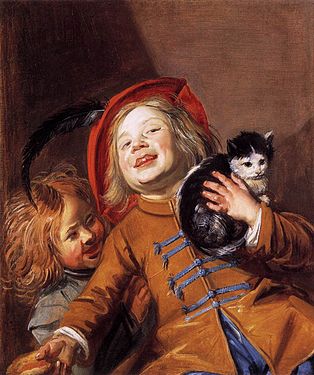
Judith Jans Leyster was a Dutch Golden Age painter. She painted genre works, portraits and still lifes. Although her work was highly regarded by her contemporaries, Leyster and her work became almost forgotten after her death. Her entire oeuvre was attributed to Frans Hals or to her husband, Jan Miense Molenaer, until 1893. It wasn't until the late 19th century that she was recognized for her artistic abilities.
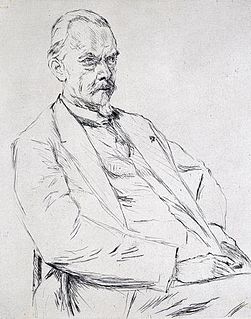
Cornelis Hofstede de Groot, was a Dutch art collector, art historian and museum curator.
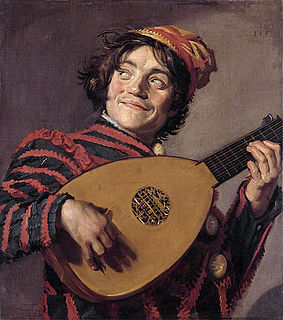
The Lute Player refers to a painting from 1623 or 1624 now in the Louvre by the Haarlem painter Frans Hals, showing a smiling actor wearing a jester's costume and playing a lute.
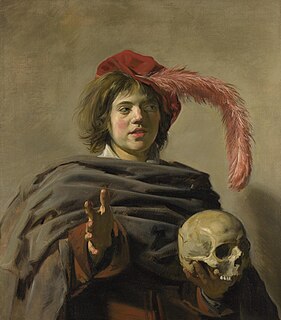
Young Man with a Skull is a c.1626 painting by the Dutch Golden Age painter Frans Hals, now in the National Gallery, London. The painting was previously thought to be a depiction of Shakespeare's Hamlet holding the skull of Yorick, but is now considered to be a vanitas, a reminder of the precarious nature of life and the inevitability of death.
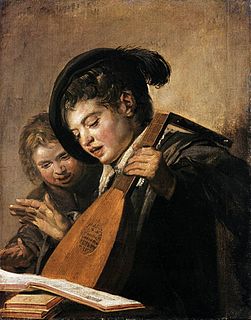
Two singing boys with a lute and a music book is a painting by the Dutch Golden Age painter Frans Hals, painted in 1625 and now in the Museum Schloss Wilhelmshöhe.

Willem van Heythuysen posing with a sword is a painting by the Dutch Golden Age painter Frans Hals, painted in 1625 and now in the Alte Pinakothek, Munich. It shows the Haarlem cloth merchant Willem van Heythuysen in a theatrical pose with a rapier.

Boy with a Glass and a Lute is a painting by the Dutch Golden Age painter Frans Hals, painted in 1626 and now in the Guildhall Art Gallery, London.

The Fisher Boy is a painting by the Dutch Golden Age painter Frans Hals, painted in the early 1630s, now in the Royal Museum of Fine Arts Antwerp.

Catharina Both van der Eem is a painting by the Dutch Golden Age painter Frans Hals, painted in 1620 and now in Louvre Museum. It is considered a pendant portrait to the Portrait of Paulus van Beresteyn, in the same museum.

Self-portrait by Judith Leyster is an Dutch Golden Age painting in oils now in the collection of the National Gallery of Art in Washington DC. It was offered in 1633 as a masterpiece to the Haarlem Guild of St. Luke. It was attributed for centuries to Frans Hals and was only properly attributed to Judith Leyster upon acquisition by the museum in 1949. The style is indeed comparable to that of Hals, Haarlem's most famous portraitist.

The Jolly Toper is a 1629 oil painting by Judith Leyster in the collection of the Rijksmuseum that is on long term loan to the Frans Hals Museum since 1959. It was acquired by the museum as a painting by Frans Hals and was attributed to Leyster by the researcher Juliane Harms in 1927.

The Serenade is a 1629 oil painting by Judith Leyster in the collection of the Rijksmuseum. It was attributed for centuries to Frans Hals until Wilhelm von Bode saw it in the Six collection in 1883. He noticed the prominent "J" in the signature, and attributed it to Jan Hals. This is one of seven paintings first properly attributed to Leyster by Hofstede de Groot ten years later in 1893.

The Merry Trio is an oil painting by Judith Leyster in a private collection. It was considered a work by Frans Hals until 1903.

The Last Drop is a c. 1639 oil painting by Judith Leyster in the John G. Johnson collection of the Philadelphia Museum of Art. It was regarded as a work by Frans Hals until 1903, when it was noticed that it is signed 'JL*' on the tankard.

Standing Cavalier is a painting by Judith Leyster in the Royal Collection. It is the only painting by Leyster with a provenance that reaches back to the 18th-century.

Young man playing the lute is an oil painting by Judith Leyster in the collection of the Rijksmuseum, and is a period copy of the same subject by Frans Hals. It was acquired by the museum as a painting by Frans Hals and was skipped by the researcher Juliane Harms in 1927, being finally attributed to Leyster by Seymour Slive in 1974.

Portrait of a Dutch Family is a painting by the Dutch Golden Age painter Frans Hals, painted in circa 1635 and now in the Cincinnati Art Museum, Cincinnati.

Family Group in a Landscape is a painting by the Dutch Golden Age painter Frans Hals, painted in circa 1648 and now in the Museo Thyssen-Bornemisza, Madrid.

Unequal Love is a painting made in about 1631 by the Dutch Golden Age painter Judith Leyster. It is in the collection of the Galleria Nazionale d'Arte Antica, Rome.

Portrait of a Man is a painting by the Dutch Golden Age painter Frans Hals, painted circa 1660 and now in the Frick Collection, New York City. The man has been mistakenly identified as Michiel de Ruyter.


